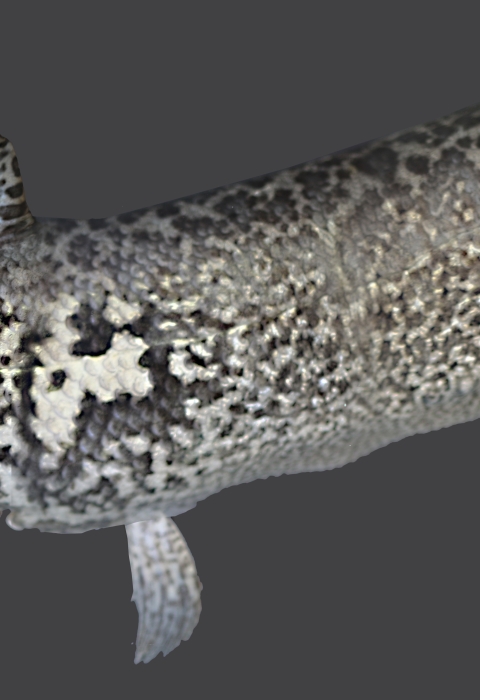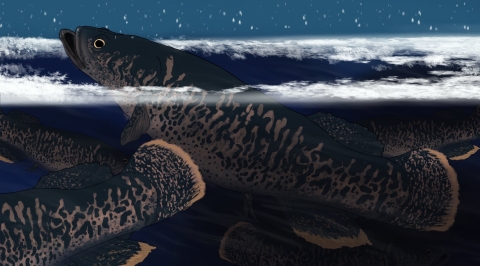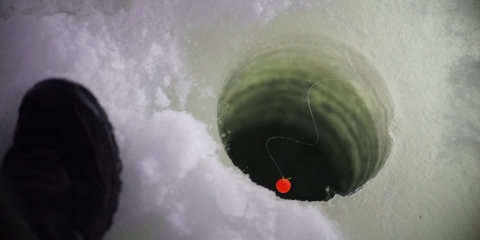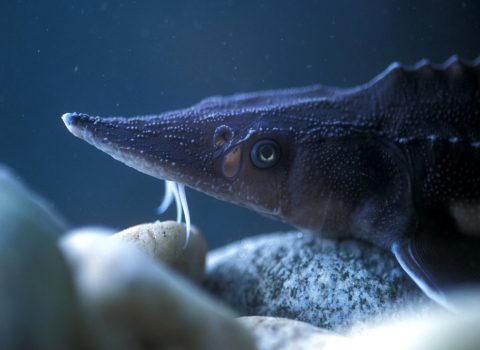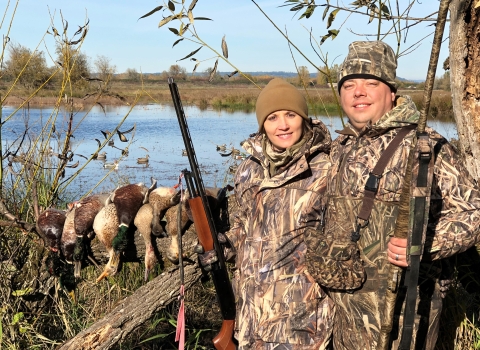Although rarely exceeding eight inches in length, this tiny Esocid is arguably the hardiest of Alaska’s fish. Most notably, they’re the only air-breathing fish in the Arctic. In fact, only a few fishes in the world can breathe atmospheric oxygen. Thanks to a modified, gas-absorbing esophagus, the Alaska Blackfish can thrive where other fish can’t, like stagnant waters and seasonal tundra ponds. How neat is that?
Alaska Blackfish spend a lot of time on the bottom of lakes and ponds, where they pursue their prey — small aquatic insects and tiny crustaceans. In winter, when dissolved oxygen levels drop under the ice, they go to the surface to gulp air. When available, they take advantage of muskrat “pushups” — where muskrats pile vegetation on the surface of the ice over an opening for safe eating all winter long. When the muskrat isn't around, a group of iłuuqiñiq (Iñupiaq for Alaska Blackfish) will swim around each other, churning the water to keep the hole unfrozen. The Blackfish gulp atmospheric oxygen from those holes to keep themselves alive through the winter, and may even help keep the holes open with the motion of their tiny fins. For this reason, elders say that Alaska blackfish can make the ice dangerous for travelers, and advise caution in certain spots. The blackfish’s behavior benefits both the fish and the muskrat, kind of like asking a neighbor to turn your water on so your pipes don’t freeze when you’re away!
Known in the Koyukon language as oonyeeyh (“the one you survive on”), Alaska Blackfish has long been harvested by Alaska Native peoples. In late winter when other fresh food sources are scarce, Alaska Blackfish are available. Subsistence fishermen catch them in funnel traps placed where they gather under openings in the ice to gulp air.
Legendary for their cold-hardiness, there are stories of Alaska Blackfish coming back to life after being frozen. Scientific studies have since shown they can’t survive being completely frozen, but they are extremely cold-hardy and can remain active under the ice in oxygen-poor lakes and ponds where other fish can’t survive.
In the geologic past, Alaska blackfish ranged over a broad area from eastern Russia to southcentral Alaska. A fossil specimen found in the Homer area shows that blackfish were once present on the Kenai Peninsula. In recent times, Blackfish occur naturally in eastern Russia and western, northern, and Interior Alaska.
Blackfish had long been absent from southcentral Alaska until they were transported to Anchorage in the 1950s.
Later, they were transported intentionally or unintentionally to waters in the Palmer and Wasilla area, where they flourished. They were found in the 1990s on the Kenai Peninsula. Efforts to eradicate Alaska Blackfish where they had been introduced included using rotenone, a compound that interferes with respiration, but the air-breathing Blackfish persisted.
Alaska Blackfish don’t inhabit any other U.S. state, so if you want to catch one of these fish you’ll have to come here to the Great Land or visit Siberia!
In Alaska we are shared stewards of world renowned natural resources and our nation’s last true wild places. Our hope is that each generation has the opportunity to live with, live from, discover and enjoy the wildness of this awe-inspiring land and the people who love and depend on it. We honor, thank, and celebrate the whole community — individuals, Tribes, the State of Alaska, sister agencies, fish enthusiasts, scientists, and others — who have elevated our understanding and love, as people and professionals, of all the fish.
